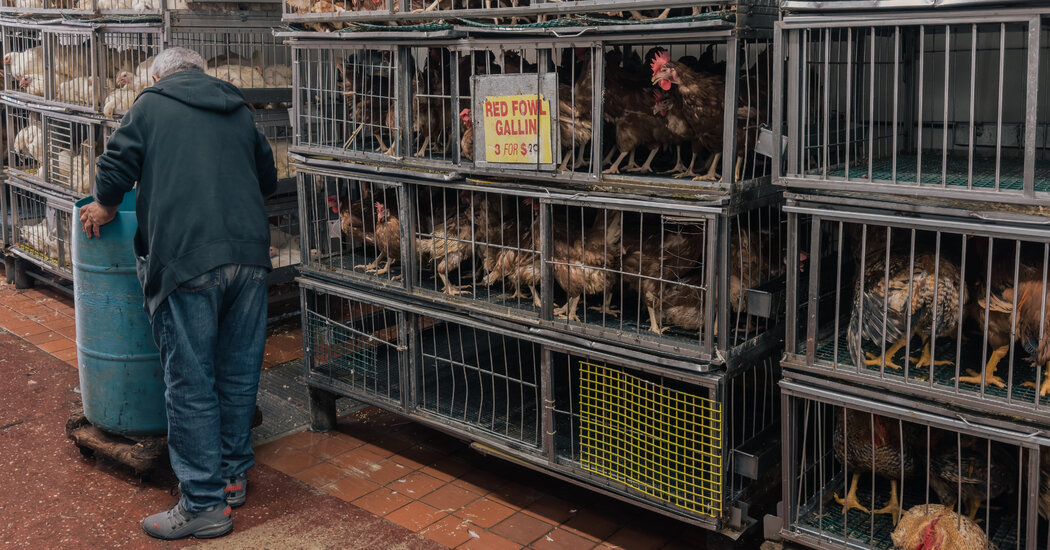Urban wet markets are fertile grounds for viral transmission, experts say. Outbreaks of bird flu have already occurred.
Hundreds of chickens are squeezed into rows of tiny stacked wire cages, urine and feces dribbling onto the ducks, the geese and the rabbits confined below. The stench spreads even outside, to the sidewalk, where a mixture of feathers and blood sticks to the shoes of children walking to school.
This is a live animal market in Queens. There are about 70 such establishments in New York City’s bustling neighborhoods, some disturbingly close to schools and residential buildings. Most markets butcher and sell chickens, ducks and quail. About one in four also slaughters larger animals, like sheep, goats, cows and pigs.
As bird flu spreads to every corner of the globe, so-called wet markets like these are worrying public health experts. They are the petri dishes in which the next pandemic virus might emerge, jumping from bird to bird, or to other animals held just a few feet away, until finally adapting to humans.
A leading theory suggests that the coronavirus pandemic began in a live animal market in Wuhan, China. If a similarly contagious virus were to evolve in a New York wet market, some experts fear there would be little to stop it from marching rapidly through the city. Tourists from all over the world might carry it back to their homes.
Indeed, some animal markets in the city already have experienced bird flu outbreaks, and operators have had to kill hundreds of birds. New York State inspectors closed seven establishments that were hit by bird flu in 2022 and 2023 for five days on average, but allowed them to reopen after cleaning and disinfection.
In the Northeast alone, about 25 million birds are sold at live markets each year, said Ann Linder, an associate director at Harvard Law School’s Animal Law and Policy Program.
